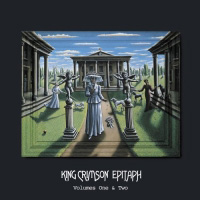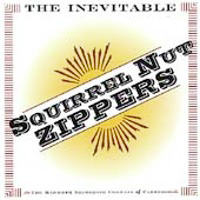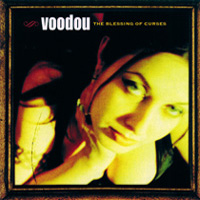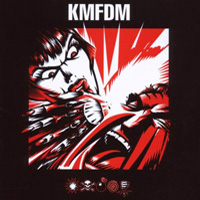 King Crimson
King Crimson
Epitaph: Live in 1969 (Discipline Global)
by Lex Marburger
“I Am the Clarified Butter.”–John Coltrane
The assimilation continues. The music that once rang discordantly in the ears of the mainstream cognoscenti (if they heard it at all) is now an accepted item on the aboveground bill of fare. The avant of yesterday has become the garde of today. Even so, there remain those who stubbornly resist conforming to the well-drawn form of the norm. Even now. This feature is an ongoing attempt to bring these artists (who have been around long enough to be considered seminal but have yet to impregnate the culture at large) to light.
Somewhere in the history of my childhood, lies an explanation. A reason I was turned on to music that was downright disturbing to others. A reason why notes that sounded like the screech of badly oiled hinges to the gates of Hell turned themselves into sweet rapture (rupture) for me. A great portion of this love seems to have come from my teenage unwillingness to accept the radio fodder that was promulgating the airwaves at the time (Animotion’s “Obsession,” A-Ha’s “Take On Me”). Rather than follow the course that many of you may have taken and plunge headfirst into the raw emotion and violent newness of the West Coast punk bands (remember,Repo Man was around at this point, before Fear and Suicidal Tendencies were names used to cop attitude), I chose to delve into the intellectual strangeness of a mass of bloated repertoires and double-album-gatefolds that was commonly shuddered to as “prog rock.” Before you all turn the page, let me tell you now that I got better. Back then, I was just a wee lad with an ear out for something I hadn’t heard before. What I came across was King Crimson. I took some excursions into Traffic and Yes (I still think Fragile is a great album, fuck you), but what captured me most was this singularly amazing group of musicians that seemed to defy everything that rock stood for in those early days of adolescent music appreciation. Here was a band that stood up for fantasy exploration lyrically, and twisted sonic development musically. They tapped into a sense of adventure that I hadn’t heard before, and have been hard-pressed to find since. The name Crimson has continued on to this day, but the original impetus and driving force was only extant for nine months. Less than a year for this band to gain national recognition and notoriety, where rumors abound about the reasons of departures by several members (bassist/vocalist Greg Lake went on to play the horrendously self-conscious posturing of ELP, keyboardist/woodwind player Ian McDonald became a founding member of, of all things, Foreigner, and is attributed as saying when asked why he left, “King Crimson is not happy music,” and there is a long-standing rumor that drummer Michael Giles’ final show had him scream, spit up blood, and run into the woods, only later to turn up as a monk. [That last one I’m taking with more grains of salt the older I get.]). The only person common to all of Crimson’s incarnations has been hermetic guitarist Robert Fripp. Not to say that Fripp is the “leader.” He hates the term more than anyone else. More precise is to say that he has continued the attitude and exploration that the first group was built around, an alchemical blend of structure and freedom, a process he describes as “letting the music play you.” Even Peter Sinfeld, the mysterious “fifth member” attributed to “words and illumination” (that’s an inside joke/double entendre, as Sinfeld was also in control of the light show) who wrote lyrics such as “Politician’s funeral pyre/ Innocents raped with napalm fire/21st Century Schizoid Man” and “Upon the instruments of death/The sunlight brightly gleams,” went on recently to have a hit with Celine Dion. So in a sense, Fripp is the Crimson Kingpin only because he stuck to his spiritual guns.
But before the fictional freakout, before the fallout to Foriegner, before the foppish flailing of ELP, between May and December of 1969, King Crimson was a nearly unstoppable force in music. Their live shows were touted as intense, spiritual, sometimes violent forces of nature, and stories of audience members breaking into tears at points in the set are common. Finally, we can see for ourselves. Discipline Music has released Epitaph, a two-CD box set documenting the first and last recordings of Crimson Mach I. Some of the songs, such as “Epitaph,” “21st Century Schizoid Man,” “In the Court of the Crimson King,” and “Mars,” are played several times during Epitaph, and show a progression of experimentation between the players. The earliest recording that exists is “21st Century Schizoid Man,” which was performed on the BBC. However, the original tapes were lost, so what’s presented here is a recording of the broadcast itself. Yes, the sound quality is poor, but the intensity is ever present. King Crimson wrote epic pieces of music, falling somewhere between structured symphonic and free-form freakout. The music is filled with tight unisons, concrete wall harmonies, and random shrieking and squealing, at once lulling you into a sense of majesty and grace (“Epitaph”) while shocking you out of your head (“A Man, A City”). The juxtaposition created between Lake’s sweet voice and Fripp’s discordant guitar is disquieting, to say the least. Your mind is torn between the soothing and jagged sounds, emotions struggling with one another. Clearly, if you’re looking for something to put on in the background and ignore, it’s not this.
An interesting effect I get, listening to these songs ten years later (and I guess for some, over twenty) is that the underlying structures of Crimson’s interlocking lines are shockingly familiar. For example, “21st Century Schizoid Man” has a unison section where everyone (including the drummer) is playing the same spastic riff, tight and quick. But the chord progression they’re using is simple blues. The same thing happens in “A Man, A City.” But that simple foundation is used to an amazing degree. The structure is used as a sonic home base, familiar territory, so that when Crimson begins to explore their world of sound the audience still has something to hold on to. At first. Soon enough, McDonald’s sax and other woodwind devices begin to wail, and while Lake’s bass holds things relatively steady, Fripp and Giles launch into flights of fancy interplay, sometimes butting heads, sometimes supporting each other. This is shown in their final performance at the Fillmore West (captured in its entirety), the Royal Red four in their final flight above the audience, creating landscapes and tapestries that still sound original and unsettling today. The last thing the first lineup ever played was “Mars,” which is based around a simple rhythm, as per Ravel’s “Bolero,” the rhythm unchanging, as the other three slowly ebb and flow around it, washes of sound and occasional fury sweeping the audience, bringing them to conclusion. With a simple “goodbye” from Lake, they left the stage and entered history, the legacy of King Crimson firmly established. Unfortunately, they also paved the way for the multitudes of bombastic, bigger-is-better plodding art rock dweebs attempting to follow in their footsteps. But this led to Eno’s rejection of such overkill, and his amazing minimalistic style. But that’s another story…



